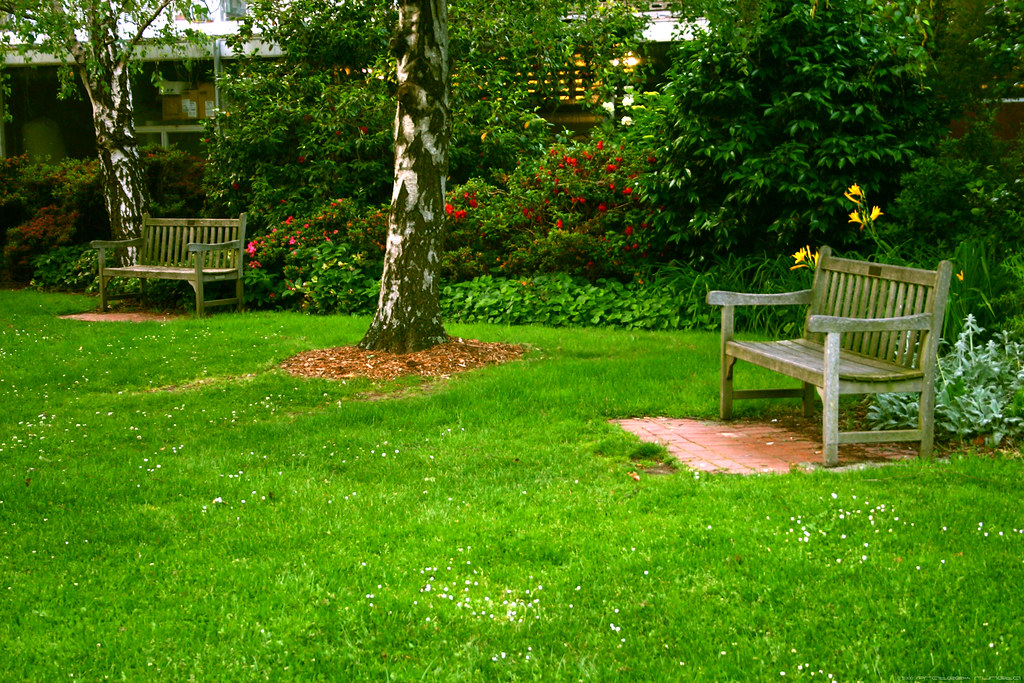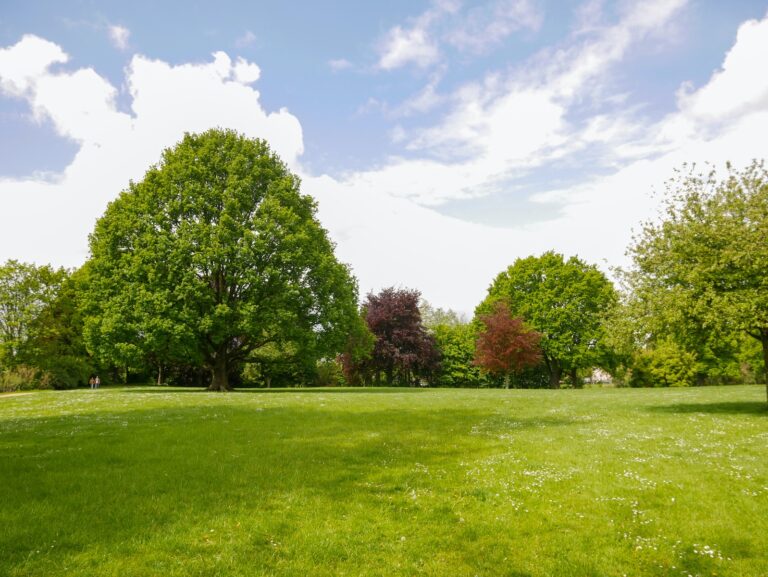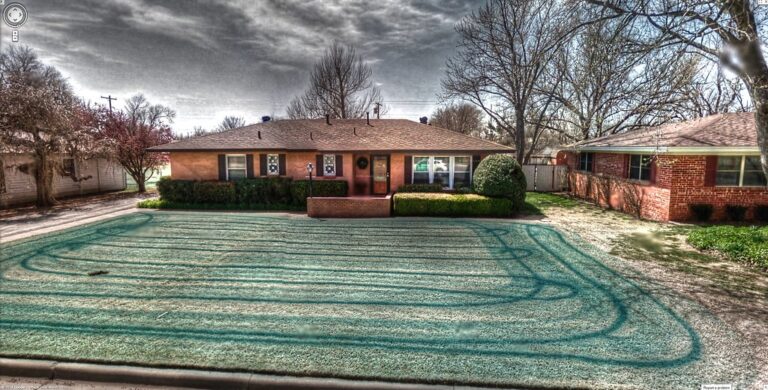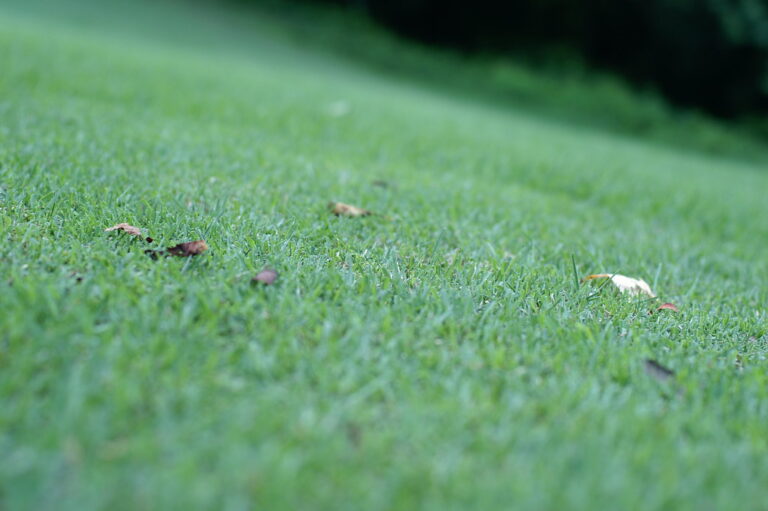Creating an Inviting Front Yard: Tips for Curb Appeal and Landscape Design

Your front yard is the first thing that visitors and passersby see, so why not make it a stunning showcase of your personal style? In this article, we will explore some tips and tricks for maximizing curb appeal and designing a landscape that will leave everyone in awe.
Whether you have a green thumb or are just starting out with gardening, there’s something here for everyone. So let’s dive in and transform your front yard into a welcoming oasis that reflects your unique taste and personality. Get ready to be inspired!
Define Your Style
When it comes to creating an inviting front yard, one of the first steps is defining your style. Your front yard should reflect your personality and taste, while also complementing the overall aesthetic of your home.
Start by considering the architectural style of your house. Is it modern and sleek, or more traditional and charming? This can help guide you in choosing a design that will enhance the existing features of your home.
Next, think about what kind of atmosphere you want to create in your front yard. Do you prefer a formal and structured look, or do you lean towards a more relaxed and natural vibe? This will influence the types of plants, materials, and colors you choose for your landscaping.
Take inspiration from various sources such as magazines, websites, or even neighboring yards that catch your eye. Collect images that resonate with you and identify common elements that appeal to your sense of style.
Remember to consider practical aspects as well. Think about how much time and effort you are willing to invest in maintenance. If low-maintenance is important to you, opt for plants that require less watering and upkeep.
By taking the time to define your style at the beginning of the process, you’ll be able to create a cohesive and visually pleasing front yard that welcomes guests with its unique charm.
Consider the Functions of Your Front Yard
When it comes to landscaping your front yard, it’s important to consider the functions that you want it to serve. After all, a functional front yard is not only aesthetically pleasing but also adds value and practicality to your home.
One function to consider is the driveway or parking area. If you have multiple vehicles or frequently host guests, ensuring there is enough space for parking is essential. You may also want to think about incorporating pathways or walkways leading from the driveway to the entrance of your home.
Another function could be creating a welcoming gathering space for friends and family. This can be achieved by adding seating areas such as benches or outdoor furniture where people can relax and enjoy each other’s company. Adding a focal point like a fire pit or water feature can further enhance the ambiance of this space.
If you have children or pets, it’s crucial to design your front yard with their needs in mind too. Consider leaving open spaces for play areas or installing sturdy fencing for safety purposes.
Furthermore, think about any specific hobbies or activities that you enjoy doing outdoors. Whether it’s gardening, birdwatching, or simply enjoying a cup of coffee in the morning sun, make sure there are designated areas within your front yard that cater to these interests.
By considering the various functions of your front yard during landscape design, you’ll create an inviting and versatile space that meets both practical needs and personal preferences without compromising on curb appeal!
Incorporate Hardy Plants
Incorporating hardy plants into your front yard is a great way to enhance its curb appeal and create a low-maintenance landscape design. Hardy plants are known for their resilience and ability to withstand various environmental conditions, making them perfect for those who want a beautiful yet fuss-free front yard.
When selecting hardy plants for your front yard, consider the climate and soil conditions in your area. Look for native species that are well-adapted to the local environment, as they will have a better chance of thriving without much effort on your part.
Not only do hardy plants require less water and maintenance, but they also provide year-round interest with their foliage or blooms. Choose a mix of evergreen shrubs, perennials, and ornamental grasses to add texture and color throughout the seasons.
Consider incorporating different heights and sizes of plants to create visual interest in your front yard. Layering taller shrubs or trees at the back with shorter flowers or groundcovers in the foreground can add depth and dimension to your landscape design.
Don’t be afraid to experiment with different colors when choosing hardy plants. Opt for vibrant flowers or foliage that can brighten up your front yard while complementing other elements such as your home’s exterior paint or any existing hardscape features.
In addition to their visual appeal, hardy plants can also attract beneficial wildlife like butterflies and bees. By creating an inviting habitat through thoughtful plant selection, you can contribute positively towards biodiversity in your neighborhood.
Remember that even though hardy plants are resilient by nature, they still require some care initially until they establish themselves. Regular watering during dry spells and occasional pruning will help ensure their long-term health.
By incorporating hardy plants into your front yard’s landscape design, you not only increase its curb appeal but also save time on maintenance tasks. So go ahead—plant smartly!
Use Color to Create Visual Interest
Color plays a crucial role in creating visual interest and enhancing the curb appeal of your front yard. By strategically incorporating different shades, you can add depth and vibrancy to your landscape design.
When choosing colors for your front yard, consider the overall theme or style you want to achieve. For a more classic and elegant look, opt for a monochromatic color scheme using varying tones of green, such as different shades of foliage or evergreen shrubs. If you prefer a bold and vibrant feel, experiment with contrasting colors like reds and purples against a backdrop of greenery.
Using flowers is an excellent way to introduce pops of color into your front yard. Consider planting seasonal blooms that will provide bursts of color throughout the year. Mix warm hues like yellows and oranges with cool blues or purples for an eye-catching effect.
Don’t limit yourself to just flowers – incorporate colorful foliage plants as well. Ornamental grasses, variegated shrubs, and trees with interesting bark can all contribute to creating visual interest through their unique textures and colors.
To create harmony in your front yard design, choose complementary colors that work well together. Blues paired with oranges or pinks combined with greens are examples of complementary color combinations that can make your landscaping stand out.
Remember that color isn’t limited to plants alone; it can also be introduced through other elements such as painted fences or decorative pots placed strategically around the area.
By carefully selecting colors that complement each other and reflect your personal style preferences, you can transform your front yard into an inviting space full of visual interest.
Play With Textures
When it comes to creating an inviting front yard, one often overlooked aspect is the use of textures. Incorporating different textures into your landscape design can add depth and interest to your outdoor space. By playing with textures, you can create a visually pleasing and dynamic look that will capture attention.
One way to incorporate texture is by mixing different types of plants and foliage. Choose plants with varying leaf shapes, sizes, and textures, such as soft ferns contrasted with spiky grasses or glossy evergreens paired with rough bark trees. This combination creates visual interest while also providing a tactile experience for visitors.
Another way to play with textures is through hardscape elements like pathways or walls. Consider using materials like gravel or pavers in various patterns to create interesting surfaces. You could also incorporate stone or brick accents to add additional texture and charm.
Don’t limit yourself to just plants and hardscaping – think about incorporating other elements that bring texture into your front yard design. For example, consider adding decorative pots or planters made from different materials like ceramic or metal for added visual interest.
Remember that balance is key when playing with textures in your front yard design – too much variation can be overwhelming, while too little can make the space feel dull and uninspiring. Aim for a harmonious blend of contrasting textures that work well together.
Bring in Furniture and Accessories
When it comes to creating an inviting front yard, don’t overlook the power of furniture and accessories. Adding these elements can instantly transform your outdoor space into a cozy and welcoming haven.
Start by selecting furniture pieces that complement your home’s style. Whether you prefer modern sleek lines or rustic charm, there are countless options available. Consider a comfortable seating area where you can relax with a cup of coffee or entertain guests on warm summer evenings.
Accessories play an important role in bringing personality to your front yard. Hang decorative lanterns or string lights for added ambiance during evening hours. Don’t forget about practical items like planters and pots to showcase beautiful blooms throughout the seasons.
Remember to keep scale in mind when choosing furniture and accessories. Oversized pieces can overwhelm a small space while tiny accents may get lost in larger yards.
Pay attention to materials that will withstand the elements. Opt for weather-resistant fabrics, durable metals, and fade-resistant finishes so your furniture and accessories will look great year after year.
By incorporating carefully selected furniture and accessories into your front yard design, you’ll create an inviting atmosphere that reflects your personal style while enhancing curb appeal.
Upkeep and Maintenance
Upkeep and maintenance are crucial aspects of maintaining an inviting front yard. While the initial design and installation may be exciting, it is important to remember that ongoing care is necessary to keep your landscape looking its best.
Regular watering is essential for the health and vitality of your plants. Depending on your climate and the type of vegetation you have, you may need to adjust your watering schedule accordingly. It’s always a good idea to check with local gardening experts or consult with a professional landscaper for guidance.
Pruning and trimming should also be part of your regular maintenance routine. This helps promote healthy growth, removes dead or damaged branches, and encourages overall plant appearance. Plus, it can prevent overgrowth that might block pathways or obstruct views from windows.
Weeding is another task that cannot be overlooked if you want to maintain a pristine front yard. Weeds not only detract from the visual appeal but also compete with desired plants for nutrients and water. Regularly inspecting flower beds, lawns, and other garden areas will help you stay on top of this chore.
Don’t forget about fertilization. Providing proper nutrients to your plants will ensure their longevity and vibrancy. Choose a fertilizer appropriate for the types of plants in your front yard and follow application instructions carefully.
By staying on top of these maintenance tasks regularly throughout the year, you’ll ensure that your front yard remains inviting all year round without any major surprises or setbacks! So roll up those sleeves (or hire some help) – keeping up with upkeep pays off in spades!
Conclusion
Creating an inviting front yard that exudes curb appeal and showcases your personal style is a rewarding endeavor. By following these tips for landscape design, you can transform your front yard into a welcoming oasis that will impress guests and passersby alike.
Remember to define your style, whether it’s traditional, modern, or somewhere in between. This will set the tone for the entire design process and ensure a cohesive look throughout your front yard.
Consider the functions of your front yard and how you want to use the space. Whether it’s a place to relax with family and friends or showcase beautiful blooms, understanding the purpose of your outdoor space will help guide your design decisions.




